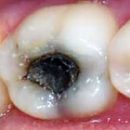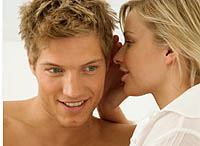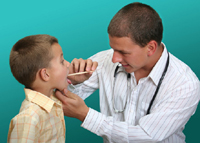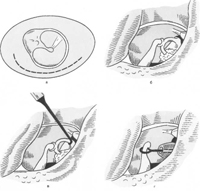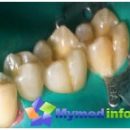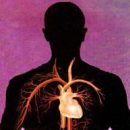Always a cheerful kid suddenly begins to cry at least with anything ... He wants to eat, but an attempt to swallow his beloved porridge causes crying again? He can't sleep, trying more convenient to get on the pillow, but he does not work? Perhaps the child has a ear hurt.
Content
See the sufferings of the crumbs, which is not even able to explain where and that he hurts, — Serious Test for Parents. Worst to realize your own helplessness. In order to such a situation, did not find surprise, it is better to learn about the disease in advance about the disease. Especially since the timely detection of illness will help him with effective treatment and will provide an opportunity to minimize the likelihood of complications.
The overwhelming majority of ear diseases belong to the group of inflammatory and has a common term — Otitis (Otitis; from Greek. OTOS — Ear and Suffix -Itis used to form inflammatory processes that can be acute and chronic).
The structure of the organ of hearing
The organ of hearing consists of two parts: peripheral and central. The peripheral part encompass a sound conductive (outdoor and middle ear) and sound-perimed (inner ear) devices; Central is represented by nerve fibers forming conductive paths that end in the cerebral cortex in temporal fractions.
Outdoor ear consists of ear shell and outdoor audit. In newborns and small children, the auditory passage is short and slightly narrowed towards the eardrum. The boundary of the outdoor and middle ear is the drummeal. In a child under two months, it is much thicker and occupies almost horizontal position.
The average ear lies in the thickness of the temporal bone and consists of three communicating parts:
- Drum cavity,
- Hearing (Eustachiyeva) pipe connecting the drum cavity with the nasooplot,
- Caves with its surrounding cells of the maternity process.
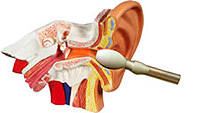 The drum cavity contains a chain of auditory bones (hammer, anvil, stirring), called due to a similar type and allowing the transmission of oscillations from the drumpoint to the internal ear; as well as — Bundles, muscles, nerves and vessels.
The drum cavity contains a chain of auditory bones (hammer, anvil, stirring), called due to a similar type and allowing the transmission of oscillations from the drumpoint to the internal ear; as well as — Bundles, muscles, nerves and vessels.
The most important element of the structure of the middle ear is the hearing tube connecting the drum cavity with the external environment. Her mouth opens in the nasopharynx on the side walls, at the level of solid sky. Along the sipset of the hearing pipe is closed and opens only when performing sucking and swallowing movements.
In newborns and young children, the auditory pipe is short and wide, which increases the risk of infection from nasopharynx in the middle ear.
The inner ear, or a labyrinth, lies in the depths of the temporal bone. The labyrinth consists of a snail and semicircular channels containing a sound visible apparatus and the vestibular analyzer receptor nerve cells. The vestibular analyzer controls the equilibrium, body position in space and muscular tone. Due to the anatomical generality of these two systems, the defeat of the inner ear can cause, in addition to the reduction of hearing, the disorder of vestibular functions. The main sign of such disorders is dizziness, nausea, vomiting.
Inflammatory diseases of the outdoor ear
Of these, children are more commonly found otitis. It occurs if the skin of the outer auditory passage (when cleaning the ears or hair combing) is infection. At the same time, the skin is blushing around the auditory pass, and the passage itself is slightly narrowed due to edema. Often there is a translucent separated.
There is also a disease of the outer ear caused by streptococci groups, — erysipelas. Infection occurs through microcracks, skin damage. The disease begins with the fact that the body temperature rises to 39.0.From and above, chills appears, the child refuses food. Own sink is blushing, swells, bubbles often appear on the skin of the outer audit.
In addition, the cause of pain in the ear can be a furuncle or inflammation of the hair follicle in the outer hearing aisle. Prerequisites for its appearance can be microtrauma leather and reduced body resistance. Outside, the boil is not visible, but its presence can be assumed by indirect signs, such as pain in the ear, which is enhanced by touching and chewing and increasing the parole lymph nodes. After a few days, the ripe was revealed, and the pain pokes. With a timely manner, the complications are able to avoid.
Evaluation of the overall condition of the child and the definition of the tactics of the fight against the disease. With a light course of the disease, it can be limited to local treatment at home — row, ointments, balm. In severe cases, hospitalization in the hospital and adding to the local treatment of general therapy — antibacterial, anti-inflammatory and t.D. In all cases, drugs must prescribe a doctor, self-medication is unacceptable.
Inflammation of the middle ear
Eliminate acute and chronic medium otitis. Acute average otitis is unconditional «leader» In the frequency of occurrence among pathologies of the organ of hearing. This disease occurs more often on the background of ARVI (as its complication) in children with weakened immunity, premature, as well as — In kids who are on artificial feeding and therefore devoid of maternal antibodies (protective proteins of blood) transmitted with breast milk. In the overwhelming majority of cases, the infection falls into the middle ear of the inflamed nasopharynx for the hearing pipe. In early age children (up to 3 years), the auditory tube is wide and short, which greatly facilitates the path of the microbe. In addition, the kids of the first year of life are preferably in a horizontal position, which makes it difficult to the outflow of the mucus outward and contributes to its stagnation in the nasophal. In infants the cause of otitis can be a mixture of a mixture or breast milk from the nasopharynx in the middle ear.
Acute Middle Otitis is divided into two forms: Catarial and purulent.
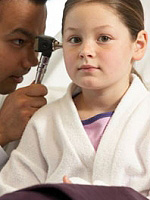 Symptoms. The main manifestation of acute medium catarrhal otitis is the pain in the ear. An early child can tell about her or specify a place that hurts. He shrieks shouting, rubs about the pillow head, sometimes grind up his teeth, can not sleep. With one-sided defeat, the baby seeks to take a forced position, lying on the sore ear, sometimes stretches to him with his hand, refuses food, as sucking and swallowing enhance pain.
Symptoms. The main manifestation of acute medium catarrhal otitis is the pain in the ear. An early child can tell about her or specify a place that hurts. He shrieks shouting, rubs about the pillow head, sometimes grind up his teeth, can not sleep. With one-sided defeat, the baby seeks to take a forced position, lying on the sore ear, sometimes stretches to him with his hand, refuses food, as sucking and swallowing enhance pain.
Set the side of the lesion, if you carefully press on the goat — Ahead of the auditory passage. On the side of the lesion will occur painful reaction, the child will pay and try to turn away from the stimulus. To better appreciate this sample, you can spend it when a child sleeps (although many moms will feel sorry to disturb the crumb). In addition, the child rises the body temperature, it is quickly tired, worrying periods are replaced by lethargy, intensity, vomiting can join, diarrhea.
In children, acute average catarrhal otitis can be very quickly (already in the first day since the beginning of the disease) go to purulent. It is characterized by fostering from the ear, which indicates the rupture of the eardrum (at the same time, pain in the ear pokes) and is an indication of the provision of urgent medical care (the child must be laid in the outer hearing pass, a dry cotton turund (fitting), be sure to wear a hat and go to the doctor ).
Complications. The danger of this disease is of serious complications that may occur when a non-time-started treatment or lightning course of the disease. Most frequent of them is mastoiditis — Acute inflammation of the deputy head of temporal bone. There is pain in the ear region, her skin can blush and swell, swell, while the ear shell is shuffled forward and the book, the child declines the head towards the defeat.
Another state that can be considered as a complication is the syndrome of irritation of the shells of the brain (meningial syndrome), which arises due to the underdevelopment of the structures of the middle ear, when nothing restrains the spread of inflammation beyond its limits, as well as — Due to the abundant vascular network and communication with the cavity of the skull. At the same time, convulsions, vomiting, confusion, and reduced motor activity arise. Child for facilitating his state reflex backrest.
Treatment. At first suspicions of the ear disease (in concern, the changed state of the child), it is necessary to call a pediatrician or an ENT doctor to consult a specialist in a polyclinic, a medical center. With a timely manner and proper treatment, it is possible to save crumb from suffering without any unpleasant consequences. For example, with acute average, Otitis in most cases there are enough conservative (non-surgical) treatment. Therapy necessarily includes a course of antibiotics in a tablet form or in the form of injections (by purulent Middle Otitis) at least 5-7 days, especially children under two years. This is done to prevent the development of complications. In addition, it is necessary to regularly apply drugs for the narrowing of vessels (vesseloring drops in the nose), which supports the permeability of the hearing pipe.
Local treatment is also applied:
- With acute average catarrhal otitis, dry thermal procedures in the ear, since heat activates blood— and lymph circulation in the focus of inflammation, as well as additional production of blood protection cells. For example — Warming up with a blue lamp (reflector), half-liter (1 part of the alcohol and 1 part of warm water) or vodka compresses, as well as turgundes with ear drops;
- In case of acute average purulent otitis, a thorough and systematic removal of pus cotton turtles, a toilet ear with disinfecting solutions (for example, a 3% hydrogen peroxide solution), antibiotics.
In addition to basic treatment, thermal physiotics can be appointed: UFO (ultraviolet irradiation), UHF therapy (the electroitate method based on the effect on the body of the patient's ultravyolovy-frequency electromagnetic field), laser radiation, mud.
Treatment of acute average catarrhal otitis occupies an average week, and acute average purulent octitis — More than two weeks.
It should be understood that the choice of one or another drug depends on the phase of the inflammatory process, antibiotics must be assigned to the obligatory consideration of the sensitivity to the microbes. In the event of the ineffectiveness of the treatment requires replacement of the drug. Independent appointment by parents of treatment based on the experience of the previous visit to the doctor can lead to undesirable consequences or mask the process, making it difficult to diagnose.
Unmarried Middle Ear Diseases
Negomous diseases of the middle ear, which more common in children, belongs to Tygetyat (another name — Eusthaitis) — Inflammation of the mucous membrane of the auditory (Eustachiyeva) pipe leading to its edema and narrowing. TygetyotyTh can appear with colds when on the background of inflammation of the nasophack mucosa and the mucous membrane of the hearing pipe is inflamed.
Symptoms. One appears— or bilateral constant hearing loss, noise in the ears, feeling of their congestion. When yawning, hearing highlighting can be improved for a while.
Treatment. Therapy for tobobotte must be complex and primarily aimed at eliminating the functioning of the hearing pipe. It is necessary to heal the focal of infection in the nasopharynx, applying local action antibiotics, antiseptics (disinfection) substances, physical. Good effect gives the introduction of drugs in the ear through a hearing tube. This procedure is carried out by the ENT.
If the source of infection in the nasopharynk is increased adenoids, then stupotitis can lead to a rack of hearing. Their timely removal helps to avoid such an unfavorable outcome.
Non-hard rules
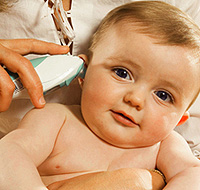 As you know, prevent the disease is much easier than to treat it. Reduce the risk of the disease otitis in a child will help compliance with several uncomplicated rules. If we are talking about the smallest, it is desirable to provide them with breast milk as soon as possible, since it is the source of the main protective forces of a small organism.
As you know, prevent the disease is much easier than to treat it. Reduce the risk of the disease otitis in a child will help compliance with several uncomplicated rules. If we are talking about the smallest, it is desirable to provide them with breast milk as soon as possible, since it is the source of the main protective forces of a small organism.
When feeding it is better to keep the baby closer to the vertical position, in order to avoid throwing fluid in the ear through a hearing tube.
Reasonable hardening also increases the body's resistance.
If the baby still has a cold, adults it is necessary to remember that in the position lying in the nasophal, the stagnation is formed, which increases the risk of infection of the middle ear. Therefore, it is necessary to remove the pathological contents of the cavity of the nose of suction-pear and periodically rotate the crumb from one side to another.
Above the uncontrolled use of antibiotics.
If adenoids are the reason for the inflammation of the middle ear, they are subject to removal.
All children with the diseases of the ears should be observed by the doctor from the beginning and throughout the disease. In no case can not be independently, without inspection and appointments of the doctor, dig in ears medicines. In suspected of developing complications, the child is subject to immediate hospitalization in the hospital and intensive treatment, in which urgent surgery is not excluded.
Do not get involved in self-medication, assign treatment on the recommendation of the pharmacy officers or friends, to give the child drugs, information about which is drawn from advertising, or to excessively rely on the omniposis of traditional medicine. The appointment of drug therapy should produce an ENT doctor after inspection and examination.

